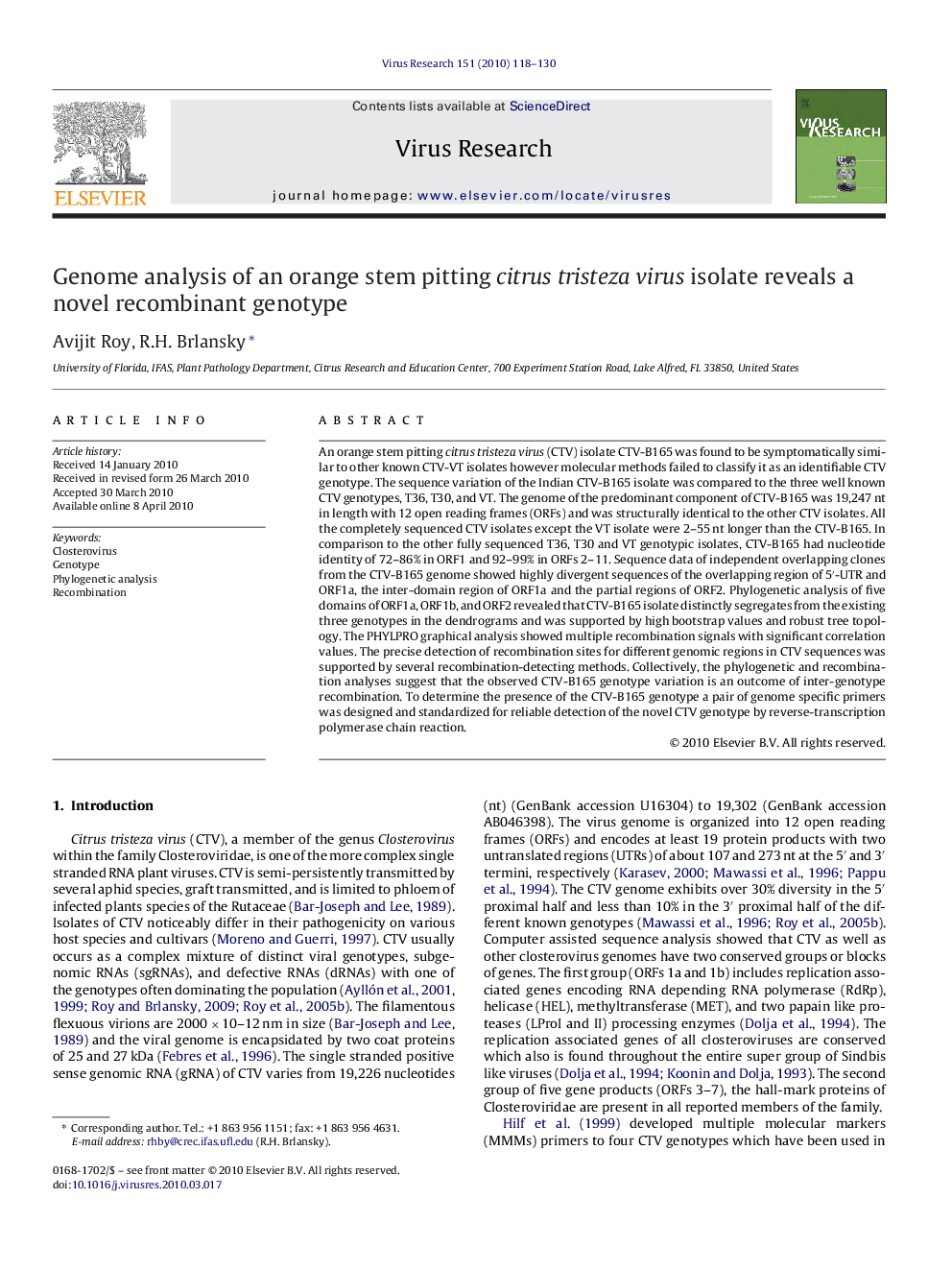| Article ID | Journal | Published Year | Pages | File Type |
|---|---|---|---|---|
| 3429212 | Virus Research | 2010 | 13 Pages |
An orange stem pitting citrus tristeza virus (CTV) isolate CTV-B165 was found to be symptomatically similar to other known CTV-VT isolates however molecular methods failed to classify it as an identifiable CTV genotype. The sequence variation of the Indian CTV-B165 isolate was compared to the three well known CTV genotypes, T36, T30, and VT. The genome of the predominant component of CTV-B165 was 19,247 nt in length with 12 open reading frames (ORFs) and was structurally identical to the other CTV isolates. All the completely sequenced CTV isolates except the VT isolate were 2–55 nt longer than the CTV-B165. In comparison to the other fully sequenced T36, T30 and VT genotypic isolates, CTV-B165 had nucleotide identity of 72–86% in ORF1 and 92–99% in ORFs 2–11. Sequence data of independent overlapping clones from the CTV-B165 genome showed highly divergent sequences of the overlapping region of 5′-UTR and ORF1a, the inter-domain region of ORF1a and the partial regions of ORF2. Phylogenetic analysis of five domains of ORF1a, ORF1b, and ORF2 revealed that CTV-B165 isolate distinctly segregates from the existing three genotypes in the dendrograms and was supported by high bootstrap values and robust tree topology. The PHYLPRO graphical analysis showed multiple recombination signals with significant correlation values. The precise detection of recombination sites for different genomic regions in CTV sequences was supported by several recombination-detecting methods. Collectively, the phylogenetic and recombination analyses suggest that the observed CTV-B165 genotype variation is an outcome of inter-genotype recombination. To determine the presence of the CTV-B165 genotype a pair of genome specific primers was designed and standardized for reliable detection of the novel CTV genotype by reverse-transcription polymerase chain reaction.
